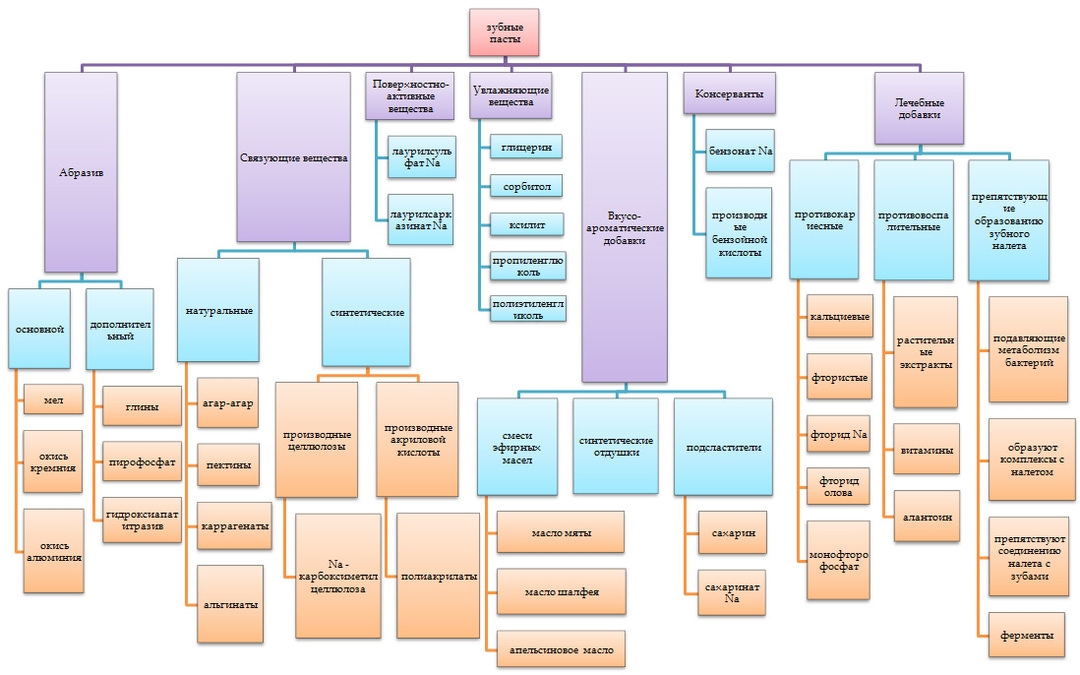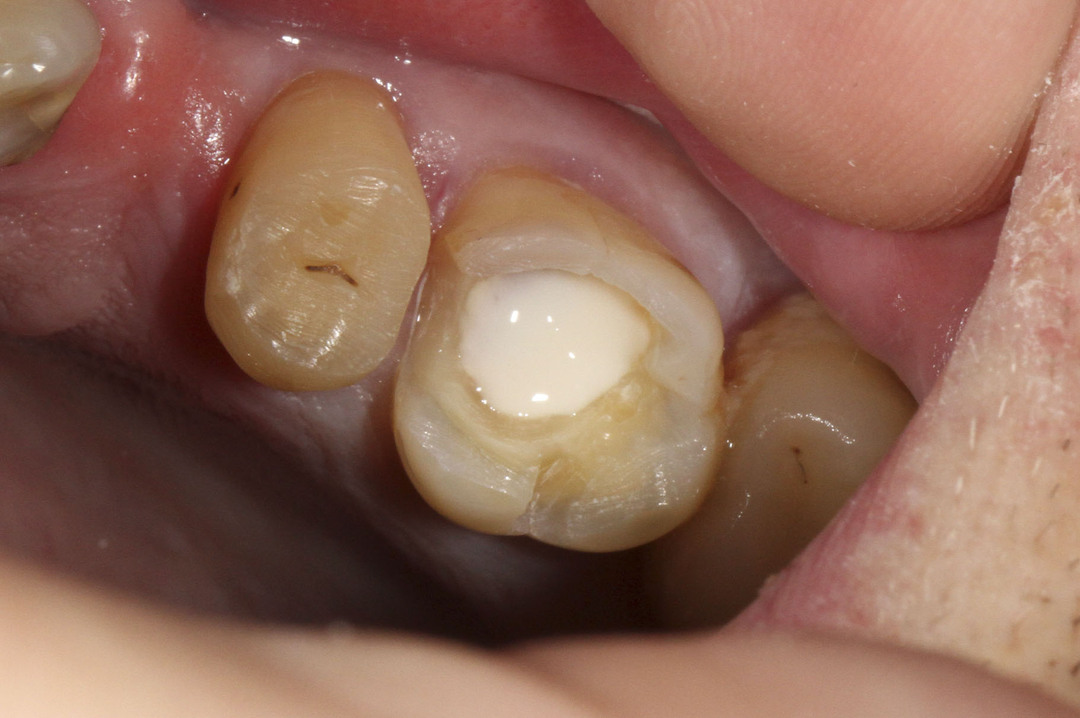Parodontosis: Causes and Treatment
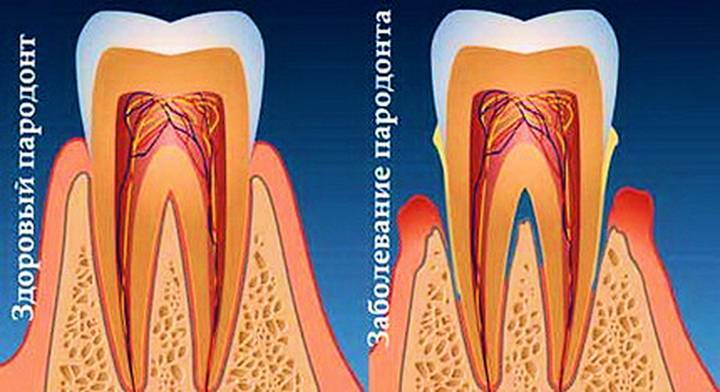 Periodontal disease is a term that implies a progressive non-inflammatory systemic lesion of the periodontal tissues( periodontium).The term "periodontium" combines the bone of the alveolar process of the jaw, the gum site and the ligament-holding ligament.In contrast to periodontitis( an inflammatory lesion, noted in 80-100% of people), periodontal disease is relatively rare;It is fixed in an average of no more than 8% of patients with pathologies of the oral cavity.
Periodontal disease is a term that implies a progressive non-inflammatory systemic lesion of the periodontal tissues( periodontium).The term "periodontium" combines the bone of the alveolar process of the jaw, the gum site and the ligament-holding ligament.In contrast to periodontitis( an inflammatory lesion, noted in 80-100% of people), periodontal disease is relatively rare;It is fixed in an average of no more than 8% of patients with pathologies of the oral cavity.
Causes of periodontal disease
It is not yet possible to establish the causes of periodontal disease precisely.Specialists attach great importance to such etiological factors as hereditary predisposition, reduced resistance of the organism( low level of immunity), hypovitaminosis( lack of vitamins), metabolic disorders and the presence of serious concomitant somatic diseases.
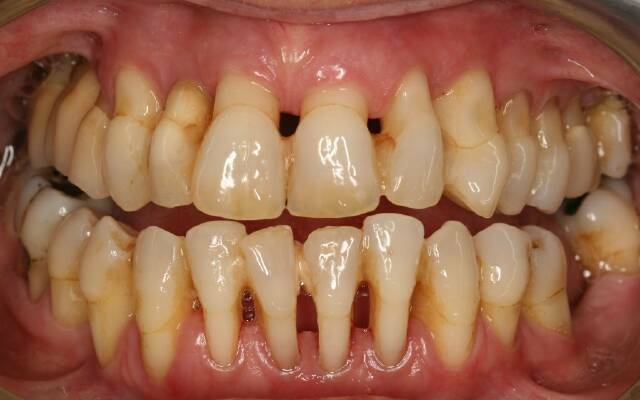
Among the common diseases against which periodontal disease may develop include :
- diabetes mellitus;
- other endocrine pathologies( hypothyroidism);
- atherosclerosis;
- pathology of the gastrointestinal tract.
A significant role is assigned to violations of the local circulation( for example - against the background of atherosclerotic changes in the vessels) leading to disruption of the nutrition of the peri-toothed tissues.
Note : according to some experts, periodontal disease can be regarded as the last stage of inflammatory lesion( periodontitis), burdened by common pathologies.
Various local factors( micro-trauma, pathogenic microflora, the presence of hard dental deposits) provoke inflammation, which can accelerate the development of the disease and aggravate its course.
Important: for periodontal disease is characterized by a slow and in the early stages of almost asymptomatic development, in this regard, patients are slow to visit the dental office, and specialists often have to face already neglected forms.
Symptoms of periodontal disease
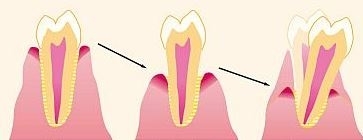
The most important sign of periodontal disease is gradually progressive degradation of tissues surrounding the tooth.Atrophy and osteoporosis of the bone tissue of the alveolus is manifested by revealing the necks and even the roots of the teeth.Gums in the affected area often have a pale color.Often there is increased bleeding gums, especially - when biting off enough solid food.Dental deposits( soft or mineralized), as a rule, are insignificant.The patient can also complain about the itching sensation in the gums and bad breath.Often there is an increased abrasion of the enamel of the teeth.
At the initial stages of the development of the disease the tooth is well fixed, but as the progression begins, pathological mobility develops due to the degenerative lesion of its retaining ligaments and the resorption of the bone tissue of the alveoli.
Note: important difference between parodentosis and periodontitis is that in the first case, bone tissue is involved in the process, and in the second case, inflammation occurs that affects mainly soft tissues.
Diagnosis of periodontal disease
The diagnosis is made based on anamnesis, patient complaint analysis and examination data.
The patient needs to find out what common diseases he and his immediate family suffer.It is also necessary to clarify how it feeds, and also where and in what mode it works.Careful collection of anamnesis often reveals the true cause of the development of pathologies in the tissues of the oral cavity, and develop an individual plan for complex treatment( often with the involvement of other specialists - endocrinologists, gastroenterologists, etc.).
For the effective treatment, it may be necessary to designate a number of crops to identify strains of pathogenic bacteria and fungal microflora.
Periodontal disease can be highly suspected if, during the examination, thinning and "shrinkage" of the gingival margin with exposure of the neck of the teeth are detected.An important feature is also the detection in the process of probing too deep pathological "pocket" between the root and soft tissues.
Diagnosis is specified during the X-ray study.Signs of periodontal disease are characterized by a fine-pore structure of the bones of the alveolar processes, as well as a "subsidence" of the bone tissue.
Treatment of periodontal disease
For periodontal disease treatment should be comprehensive.The main goal of therapy is the stabilization of the pathological process.To eliminate local factors, which further aggravate the course of the disease, the patient is shown professional oral hygiene.
Parodontosis: treatment with
Patients who are diagnosed with periodontal disease show medicines and physiotherapy that improve microcirculation in the tissues of the oral cavity and accelerate the processes of tissue repair( repair).Of great importance is the treatment of common diseases that could cause the development of violations in the periodontium.
To reduce or completely stop the inflammation of the gums on the mucous membranes, it is recommended to apply the holisal gels, Metrogil denta and Asepta balm.You can also recommend Malavit or Kamistad.
For the control of pathogenic microflora antiseptic solutions for mouth rinsing, as well as oral antimicrobial and antifungal agents of a wide spectrum of action - Salvin and solutions of Sanguirithrin are prescribed.The most effective antibiotics shown in the treatment of periodontitis are lincomycin and metronidazole( Trichopolum).
In the deep periodontal pockets the doctor lays ointments-inhibitors of proteolysis( countercranial, trasilol, gordoks) and stimulants of local osteogenesis( bone growth).Etonia ointment, Dimexide and Iodinol solutions are also used.Procedures should be conducted regularly for a sufficiently long period.
To improve local metabolism, the enzyme antihypoxic drug Cytochrome C( in tablets) is shown, as well as the bacteriolytic enzyme Lysozyme( topically in the form of rinses or applications and intramuscularly).Iruksol favors the enzymatic cleansing of the affected areas of the dentoalveolar system.
In the treatment of periodontal disease, patients are shown taking multivitamin preparations that strengthen the body as a whole and positively influence the nutrition of the tooth tissues.Recommended reception of immunostimulants, for example - tablets for resorption of Imudon.
In case of an acute process, it is advisable to designate "biopaste" for applications.For its preparation you need to take 10 tablets of Vikasol and Metilitacil, 5 - Sulfadimethoxin and 1.5-2 tablets of Decaris.Tablets should be crushed into powder and add the sea buckthorn oil( to the consistency of the paste).
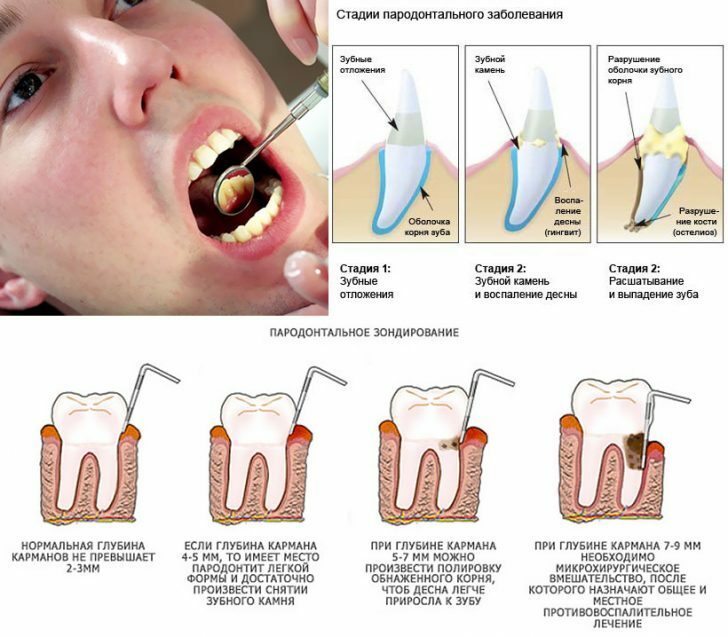
The depth of the dentogingival pockets of 4-5 mm indicates a mild form of periodontitis, for which it is usually sufficient to remove hard dental deposits and conduct local anti-inflammatory therapy.The depth of the periodontal pocket of 5-7 mm already requires polishing the root part, and if a depth of 7-9 mm is detected, the treatment of periodontal disease should include a small surgical intervention - curettage( performed on an outpatient basis).In some cases orthopedic treatment may be necessary: the affected tooth is covered with a crown, which is welded to the fixed teeth with a prosthesis.
The following physiotherapeutic procedures are recommended:
- gum massage;
- Ultrasound therapy( with ultrasound scaler);
- darsonvalization;
- hydromassage( gingival shower).
Treatment of periodontal disease at home
Treatment of periodontal disease at home is possible if it is a question of taking medications prescribed by a doctor and standard hygiene procedures.
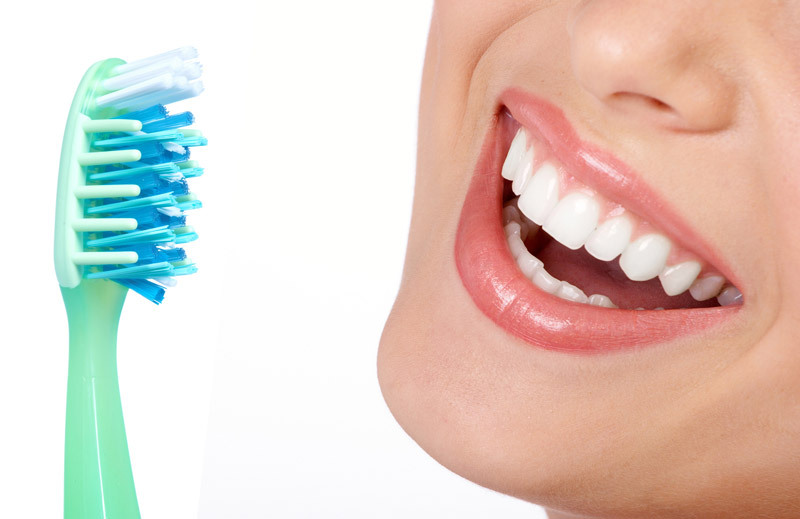 Patient should pay increased attention to oral hygiene.With periodontal disease, you need not just cleaning the surfaces of your teeth with an ordinary brush, but additional gum massage with bristles with increased elasticity.Massage allows you to increase the flow of blood and, thus, improve the nutrition of periodontal tissues.It is desirable to clean the interdental spaces with flosses( hygienic threads) to prevent accumulation of plaque in these relatively inaccessible places.
Patient should pay increased attention to oral hygiene.With periodontal disease, you need not just cleaning the surfaces of your teeth with an ordinary brush, but additional gum massage with bristles with increased elasticity.Massage allows you to increase the flow of blood and, thus, improve the nutrition of periodontal tissues.It is desirable to clean the interdental spaces with flosses( hygienic threads) to prevent accumulation of plaque in these relatively inaccessible places.
It is necessary to eat solid foods, which contributes to both cleaning the surfaces of the teeth, and affecting the gums.
The diet should be balanced and contain enough vitamins and microelements necessary to strengthen the bone tissue.

Important: without qualified dental care, these measures alone are effective only in the early stages of periodontal disease, and also if it is only inflammatory diseases - gingivitis and periodontitis.
Parodontosis: treatment with folk remedies
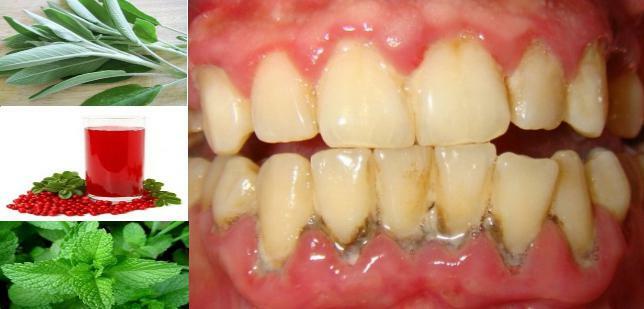
Advocates of folk methods of treatment recommend periodontitis for a long time to chew sauerkraut and rinse the oral cavity with its juice( brine).Given the huge amount of vitamins and trace elements contained in this product, the technique can be recognized as effective, but only as an additional treatment.
For the strengthening of periodontal it is useful to chew fresh leaves of plantain and make applications from it on the gums.
To improve the condition of the gums, it is recommended to massage them, first applying a mixture of olive oil and sea salt to the inflamed and weakened areas.
You can also use finely grated fresh sugar beet for appliqués.It should be spread evenly over the gums.The procedure should be carried out for 30 minutes daily.The positive effect will be noticeable in a week.
When periodontitis is recommended, rinse the oral cavity with decoctions of herbal remedies.
The following medicinal plants can be used for the treatment of dental diseases:
- jaundice;
- adonis;
- elecampane( root;
- ashberry( fruits collected after full maturation);
-
 hawthorn;
hawthorn; - melissa;
- celandine;
- alternating leaves;
- valerianu;
- immortelle;
- plantain;
- chag( birch fungus):
- St. John's wort,
- chamomile( ordinary)
Forecast
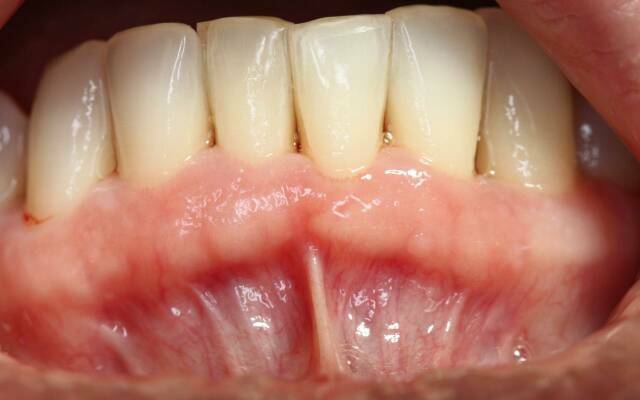
With timely treatment and an integrated approach to the treatment of periodontal disease, it is often possible to keep teeth.Pathological mobility of one or more dentition units is noted, at an early stage of pathology development, the procedures performed can reduce or eliminate the negative consequences.People who postpone a visit to the dentist or who do not follow the recommendations given to them, risk losing their teeth already at a fairly young age, becauseParodontosis has the property of steadily progressing.
You will receive some useful tips on the treatment of periodontal disease by viewing this video:
Vladimir Plisov, dentist

